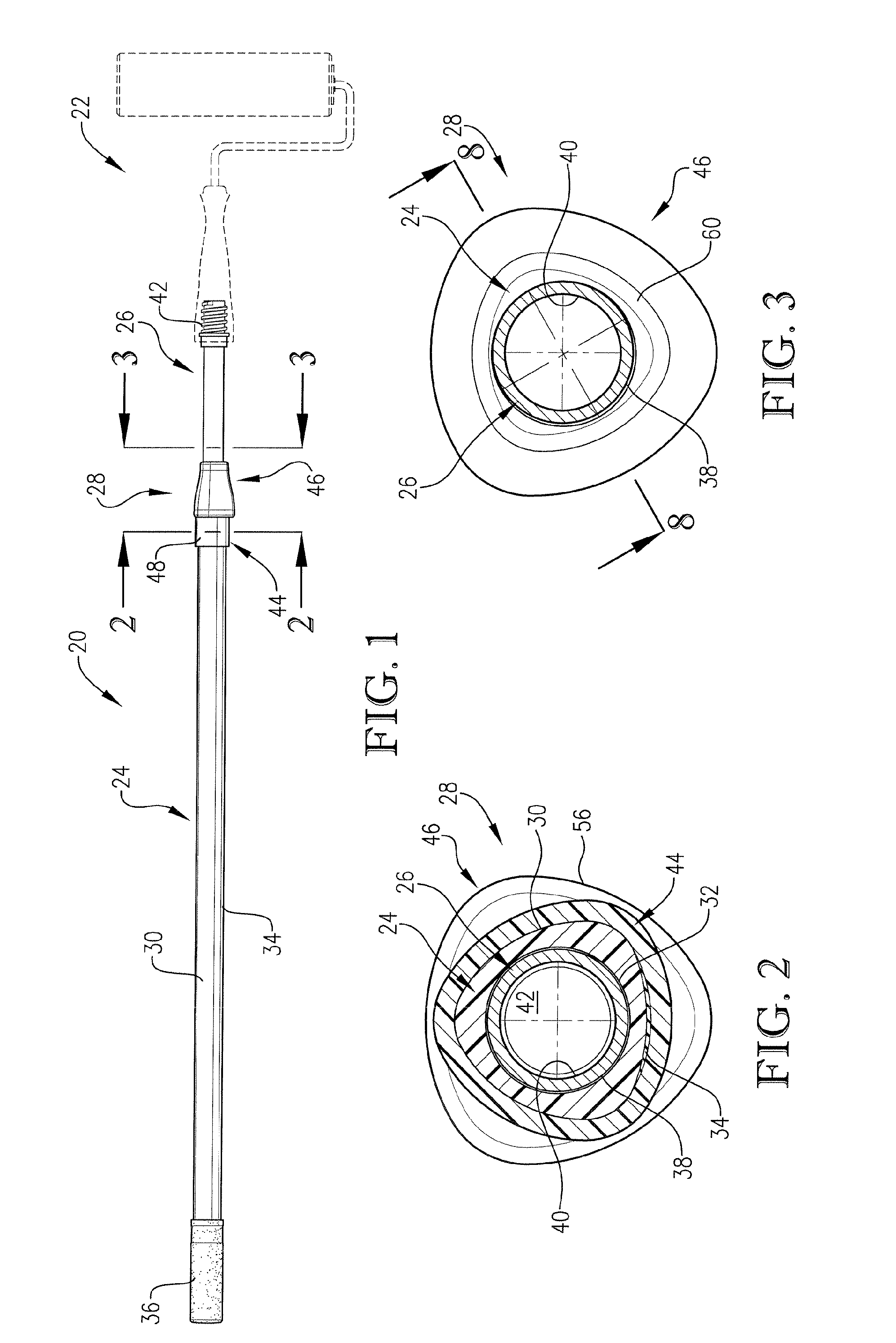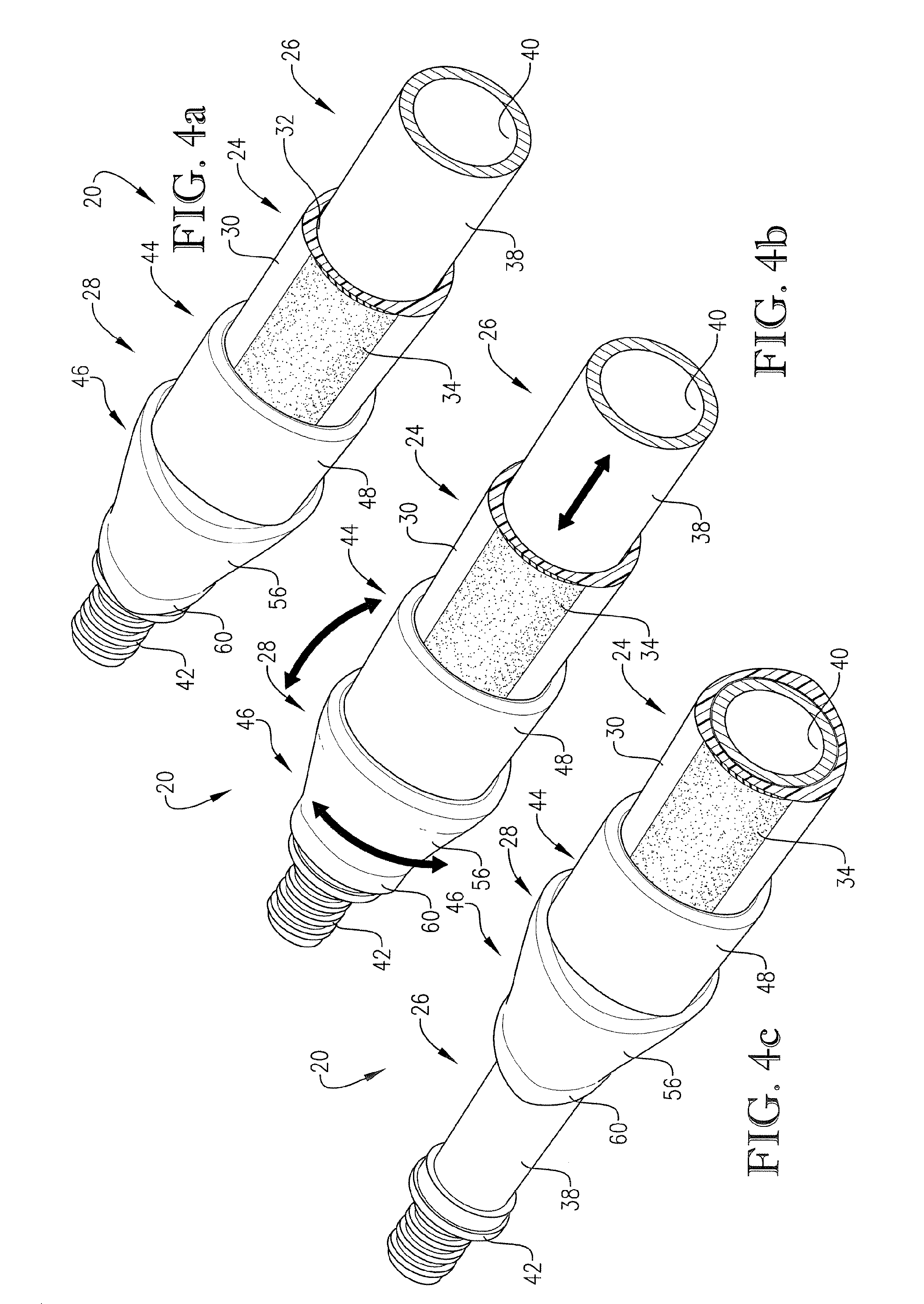Locking mechanism for an extension pole
a locking mechanism and extension pole technology, applied in the field of extension poles, can solve the problems of deficient type of locking mechanism, pole may unexpectedly collapse, and the locking mechanism fails to provide infinite adjustability, so as to prevent the relative rotation between the bodies and prevent the relative shifting of the bodies
- Summary
- Abstract
- Description
- Claims
- Application Information
AI Technical Summary
Benefits of technology
Problems solved by technology
Method used
Image
Examples
Embodiment Construction
[0028] Turning now to the drawings, FIG. 1 illustrates an extension pole 20 in accordance with the invention, shown supporting an exemplary working tool, in this case a paint roller 22. It will be understood that the pole 20 can be used with a variety of different tools, well known to those skilled in the art.
[0029] Broadly speaking, the pole 20 includes an elongated outer tubular body 24, an elongated inner body 26 telescopically received within body 24, and a locking mechanism 28 operatively coupled to the poles sections 24, 26. As explained in more detail hereinafter, the pole 20 is designed to allow the user to quickly and easily adjust the effective length of the pole 20 as desired, while also assuring that the pole in its extended position is securely locked against inadvertent collapse.
[0030] In more detail, the outer body 24 is in the form of an elongated tube. The illustrated body 24 preferably presents a polygonal (i.e., somewhat triangular) outer gripping surface 30 wit...
PUM
 Login to View More
Login to View More Abstract
Description
Claims
Application Information
 Login to View More
Login to View More - R&D
- Intellectual Property
- Life Sciences
- Materials
- Tech Scout
- Unparalleled Data Quality
- Higher Quality Content
- 60% Fewer Hallucinations
Browse by: Latest US Patents, China's latest patents, Technical Efficacy Thesaurus, Application Domain, Technology Topic, Popular Technical Reports.
© 2025 PatSnap. All rights reserved.Legal|Privacy policy|Modern Slavery Act Transparency Statement|Sitemap|About US| Contact US: help@patsnap.com



